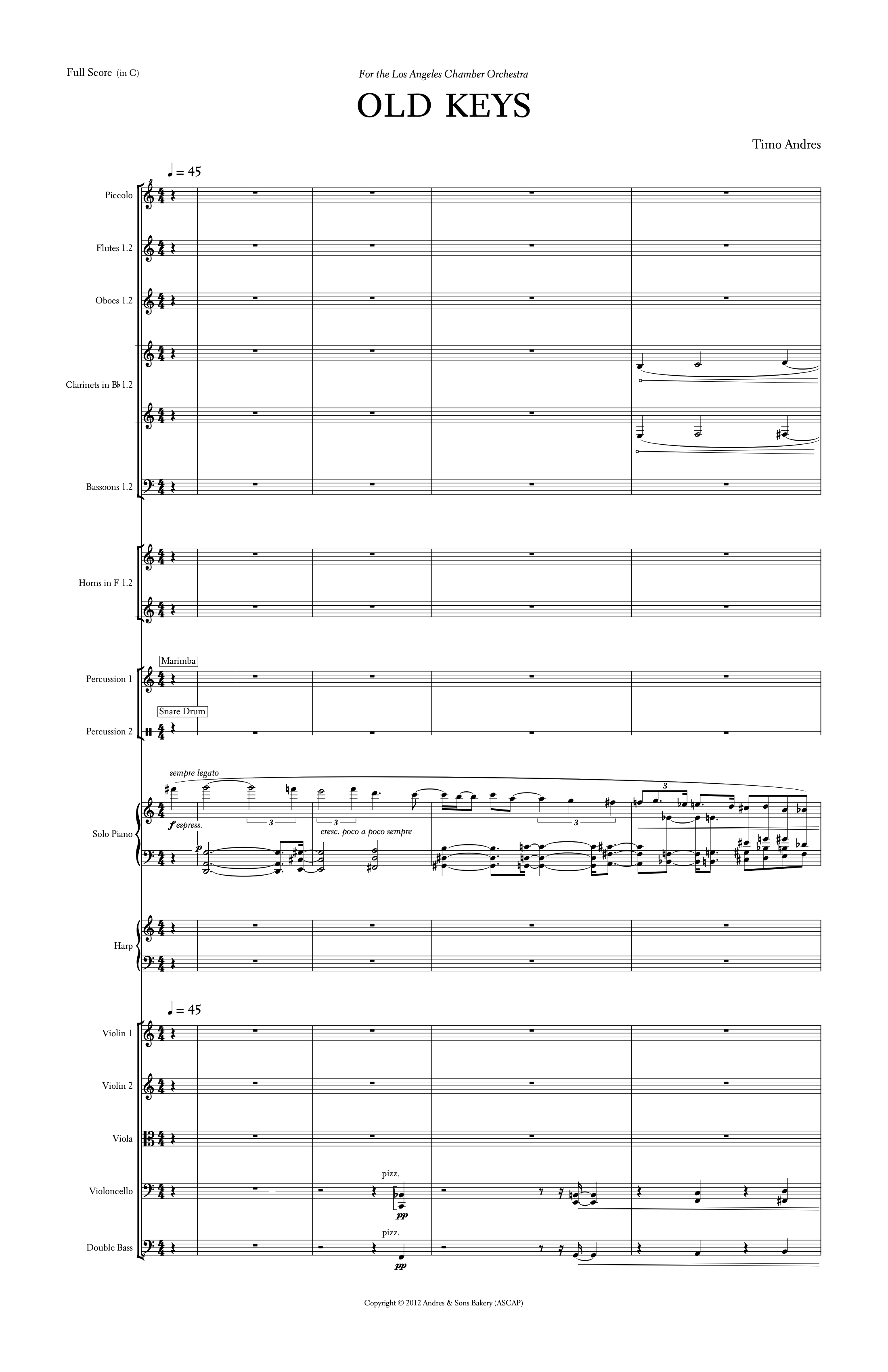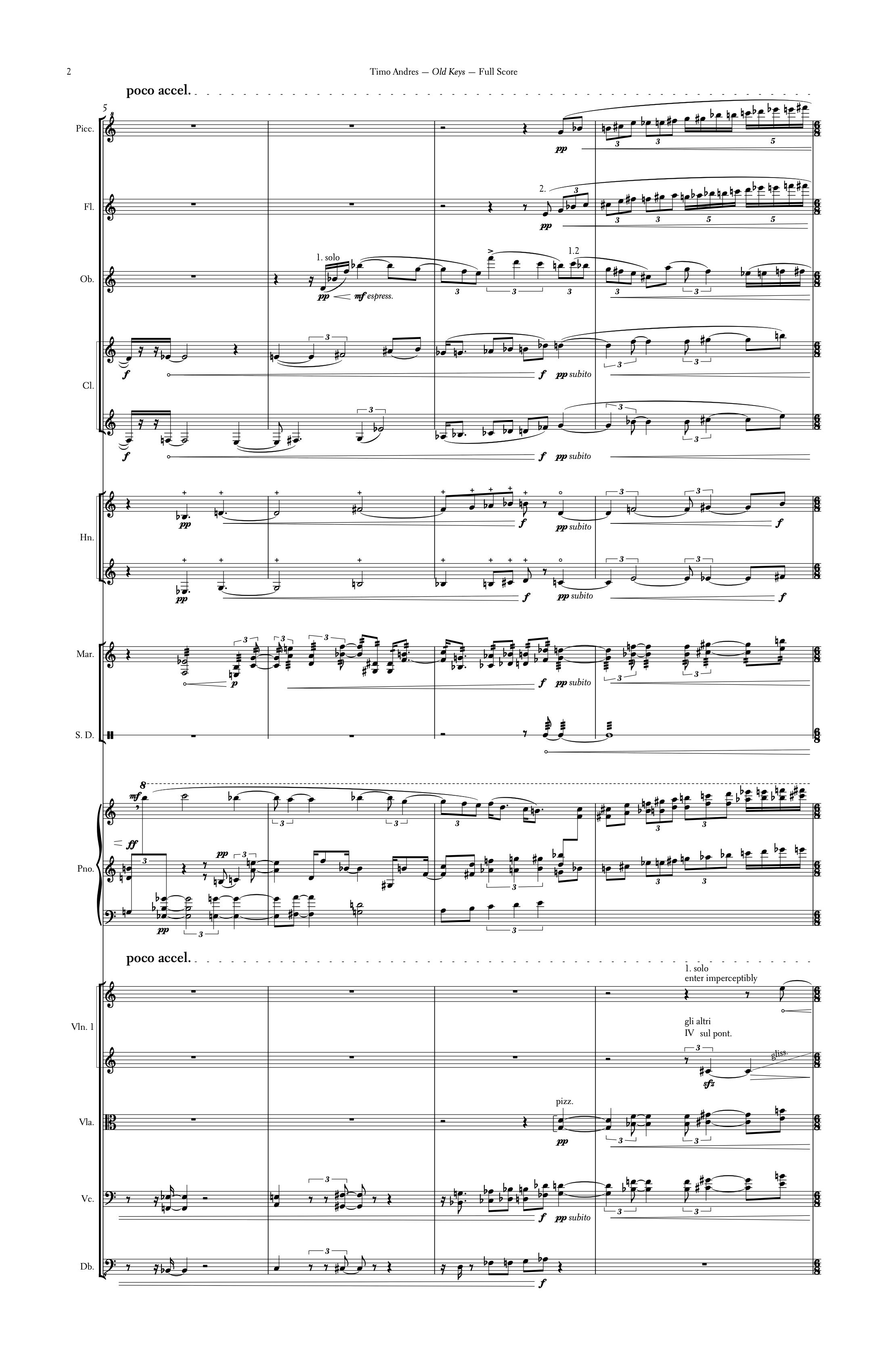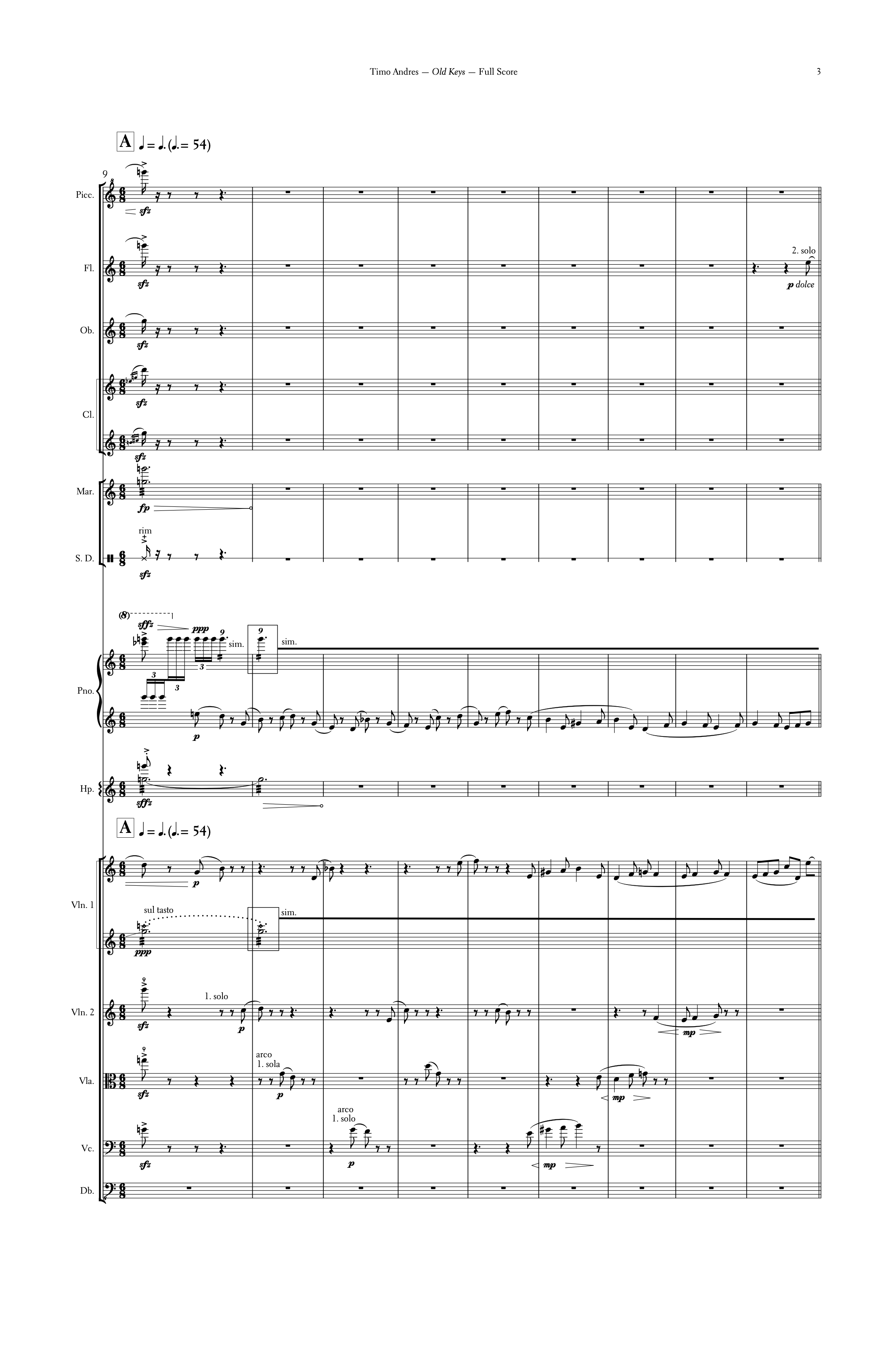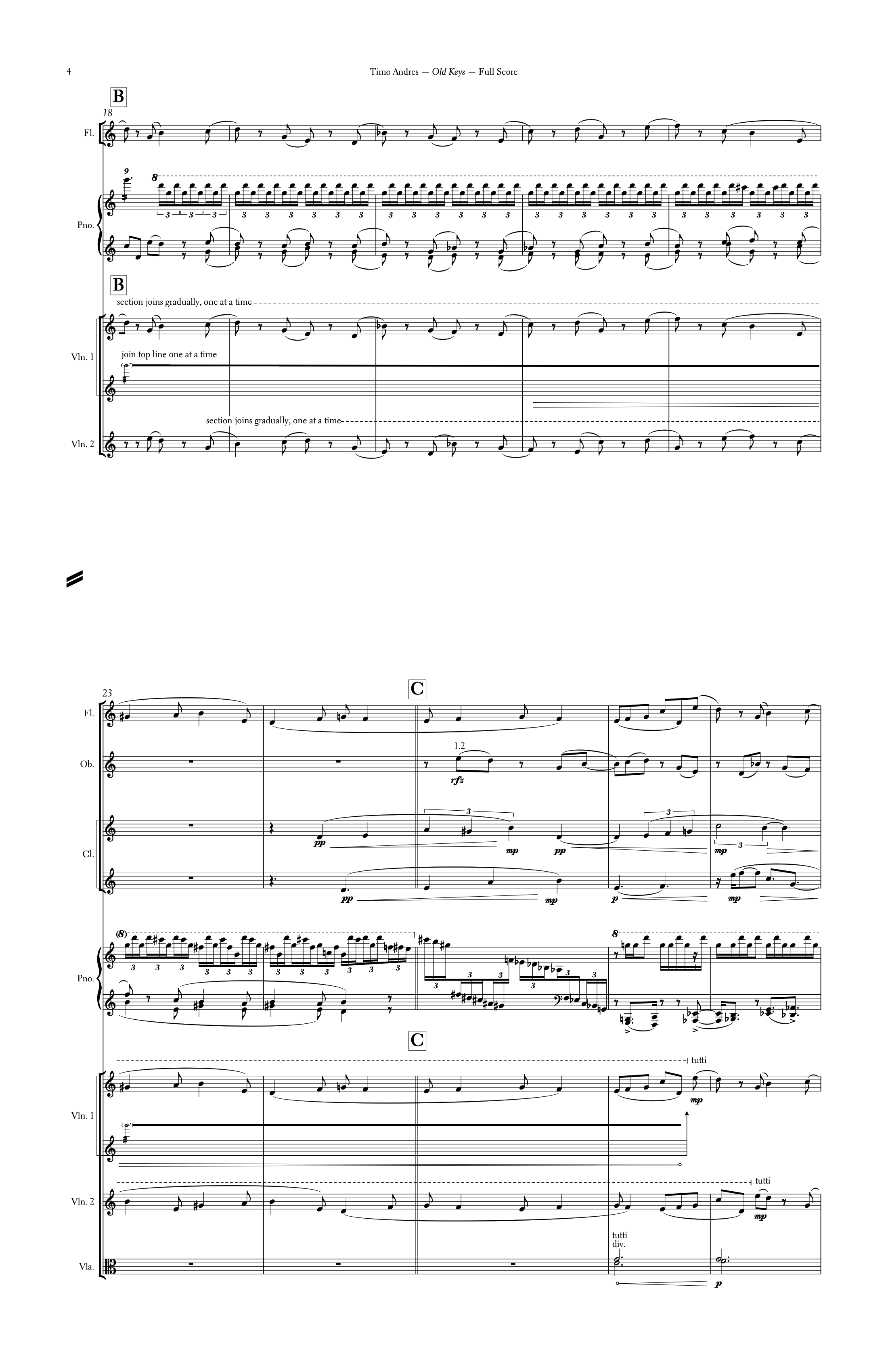Note
Old Keys is a piece in transition, but it wasn’t always meant to be that way. Sometimes pieces show you their own direction, and this was such a case; after working on it all summer, certain things about the piece still bothered me. These weren’t little problems, the kind which you should be fixing after months of work. Rather, they were overarching problems of narrative, form, flow, and the relationships between musical materials—much more troubling.
In the fall, I resolved to take control of the situation by drawing out a formal plan—the information about “what happens when” in a piece, somewhat analogous to an architect’s blueprint. The very words I’d chosen to describe musical events—lengthen, degradation, build, canon, overlap—revealed that maybe the music wasn’t supposed to settle down, that the constant, peripatetic movement to the Next Thing was in fact the defining characteristic of the piece. That also explained why the three main “themes” felt strangely similar to each other.
One of those themes, and the reason the piece is called Old Keys, comes from a piece I wrote just before, a setting of Hart Crane’s My Grandmother’s Love Letters for solo bass and voice. It’s a simple affair, a D major triad with an added fourth, played over a sing-songy rhythm. The other two themes are closely related to this one, and could even be seen as variations. They even share that short-long, short-long lilt, vaguely reminiscent of British Isles folk music.
The great thing about using simple materials is that they work themselves into the fabric of a piece in a way long or complex themes can’t. There’s an obsessive quality to the way those three themes permeate Old Keys, which I hope helps to create a sense of wholeness despite its unsettled nature. Material from the themes, looped or in canons, often serves as accompaniment; copies of the themes run at different speeds along with each other, in different keys; this interplay spurs development, and in a couple of places, builds up quite a complex web of counterpoint.
Another strange aspect of the piece is its appearance of being a piano concerto—which it is, but just barely. I didn’t ever conceive of the piano part as a virtuoso vehicle (unlike my previous piano concerto, Home Stretch), the result being that the piano often plays the least complicated material, leaving flourish and filigree to the other instruments. Concerti are often about the soloist—Old Keys is more about the piano.
It’s rather difficult to give a play-by-play of a piece which quite purposefully lacks clear points of articulation, but it might be useful to think of Old Keys in three main sections. The first is introductory, a building canon which is passed around the string sections and picked up by the winds; high piano, harp, and marimba provide a shimmery, G‑centric pedal. Solo piano introduces the large middle section, which is preoccupied with chorales, starting slowly, then urged on by fast, unmeasured string accompaniment. The chorales grow darker and more downcast, chromatically pushing down the keyboard. Quiet reminiscences of previous themes eventually begin a layering process, which becomes one of those contrapuntal snarls, which is soon washed away by a strong D pedal and horns loudly playing the “Hart Crane music”. I think of this as the third section, or coda. D major lasts for quite some time—the only really “settled” part of the piece— but eventually falters and slides down to C; the rest of the section is further quiet layering, including a passage in which the piano plays all three themes at once, at different speeds.
Listen
Timo Andres: Old Keys
recorded live at Royce Hall, Los Angeles, CA, March 2012
performers Timo Andres, piano; Jeffrey Kahane, conductor; Los Angeles Chamber Orchestra
Purchase
-
Old Keys score, print edition
-
Old Keys score, PDF edition
30 pages, 11×17 format. Includes full score only. Parts are available for rental; please email rentals@andres.com for a quote.



